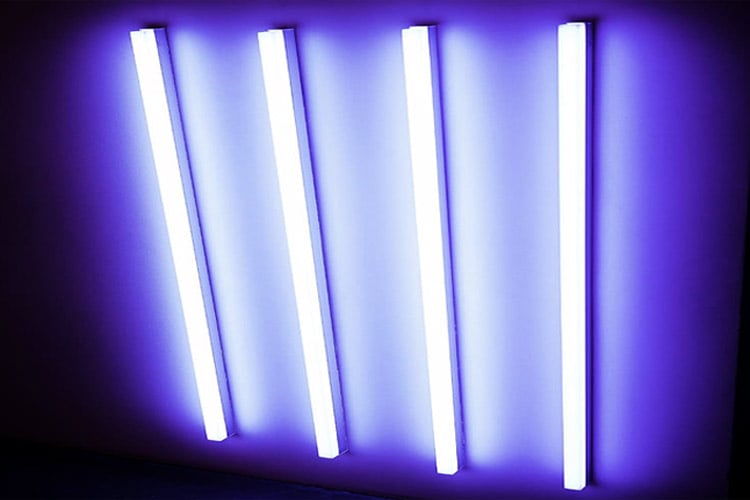
COVID-19 pandemic has breathed a new life into a decades-old ultraviolet light technique to kill viruses and bacteria. With the virus spreading at such a fast pace globally, various tech giants, start-ups, and technical institutions have started working towards coming up with smart solutions. UV sanitization to talk about has gained ground and the market is flooded with various products that claim to make your surroundings virus-free. Besides electronic giants, various technological institutions, startups, etc. have jumped onto the bandwagon of coming up UV sanitization products and solutions.
The products that have successfully made it to the market shelves come with an alluring description and many of them claim to kill the 99.9% virus. The question that hovers on our mind is that are these UV lights really successful in killing the virus? Which UV wavelength works the best and what is the time for UV exposure to kill the viruses. We got a bit curious to get the answers to these questions and delved into the topic. Let’s try and understand this a bit.
What Exactly are UV Lights?
Ultraviolet light is a type of electromagnetic radiation with different wavelengths and frequencies. The spectral range of UV light is, by definition between 100 and 400 nm (1 nm=10-9m) and is invisible to human eyes. Out of the three types of UV lights viz. UVA, or near UV (315–400 nm), UVB, or middle UV (280–315 nm), UVC, or far UV (180–280 nm) has gained favor due to its ability to help kill various types of viruses.

Unlike UVA and UVB, the UVC is completely absorbed by atmospheric ozone and has minimal penetration to the surface of the Earth. Thus, it has little effect on human health and can be created artificially by various means. Exposure to UVC lights should be completely avoided.
Can UV Lights kill Viruses?
Yes, according to several studies including those in a recent Illuminating Engineers Society (IES) report, UV light, UV-C light to be more precise is the only UV light that has been effectively tested to inactivate viruses and kill bacteria. UV-C light is also known as Germicidal UV has been known to be quite effective in destroying germs, viruses, and other DNA and RNA of other harmful contaminants, altering their structure and making them unable to replicate. UV-A and UV-B lights on the other hand have the ability to kill bacteria but have limited efficacy in the inactivation of viruses.
Researches show that UV-C can effectively inactivate airborne microbes that transmit measles, tuberculosis, and SARS-CoV-1. The UV lights prove to be a safe, inexpensive, and efficient way of eliminating airborne flu viruses in hospitals, offices, schools, airports, etc. by limiting the transmission and spread of airborne-mediated microbial diseases like influenza and tuberculosis. In simple words, the UV lights play a vital role in sterilization and disinfection. Microorganisms have less protection against UV and cannot survive prolonged exposure to it.
Practical Applications of UV Lights
Because of its effectiveness, UV germicidal technology has proved incredibly useful for hospitals, medical labs, senior care Centres, fire and police stations, airports, transit stations, schools, government buildings, office buildings, and hotels. UV germicidal technology is integrated into air conditioning systems to sterilize pathogens that cause illnesses and contaminants that can aggravate respiratory conditions. Besides, there are UV lamps that are to remove harmful or toxic chemicals produced in many industries and to reduce or eliminate harmful toxins from the industrial exhausts.
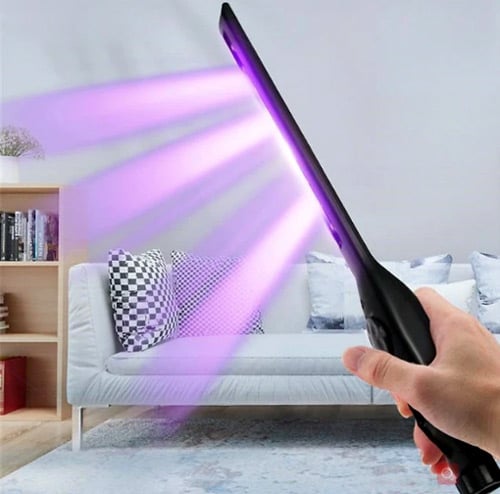
UV lights are used in hospitals. There are UV towers in the hospitals that are used whenever a new patient is admitted to the hospital. Also, the hospitals use UV lamps for sterilizing surgical equipment and the air in operation theaters. Besides, germicidal lamps are successfully used in air conditioning systems of medical and other facilities to sterilize pathogens that cause illness, and contaminants which are responsible for aggravating asthma or other respiratory ailments.
Commercial airlines play a direct role in spreading viruses. Airports have the ability to carry germs across continents. Therefore, effective routine treatment should be done. For these various UV, scanners are being used to kill the viruses and germs.
Dimer UVC Innovations is a US-based company that comes up with UVC light disinfection systems. A few months back the company introduced a germ-killing robot named GermFalcon which is the first UVC system designed to quickly disinfect an aircraft’s interior surfaces between flights. The robot sanitizes airplanes and helps disrupt the spread of coronavirus.

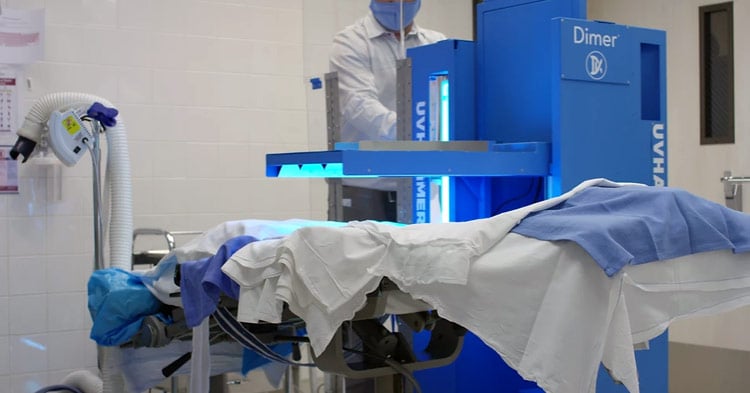
Does UVC Really Destroy Germs?
UVC is strongly absorbed by RNA and DNA basis leading to molecular structural damage, thereby destroying the ability of the cell of an organism to reproduce. This results in virus inactivation, such that they are no longer able to replicate.
According to Alex Berezow who is a microbiologist, “UV light is lethal to bacteria and viruses because of its high frequency that scrambles and damages their nuclear material. When it damages the DNA (or RNA) code of these pathogens, it also triggers lethal mutations that prevent them from reproducing properly.” He further added that UV light kills everything from bacteria to fungi, viruses, etc.
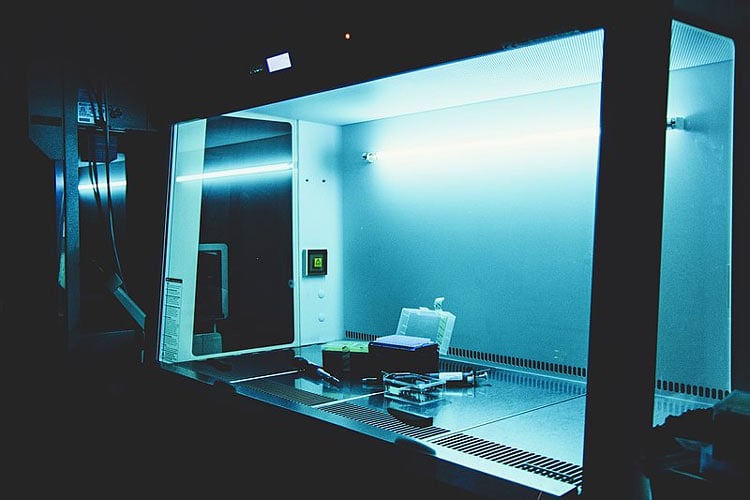
The effectiveness of UVC depends on the intensity, wavelength of the UV radiation, and the amount of time for which the microorganism is exposed to UV, the presence of particles that can protect the microorganisms from UV, and the ability of a microorganism to withstand UV during its exposure. Farther the distance from the light source, the lesser will be the UVC reaching the target.
Low-pressure mercury discharge lamps are the most efficient source for generating UVC. In these lamps, approximately 35% of input watts are converted to UVC watts. The radiation is generated almost at 254 nm (which means 85% of the maximum germicidal effect and 80% on the IES curve).
Advantages of UV Lights
Using UV lights for sterilizing and disinfecting has some advantages over other methods and that is the reason it has been used for many years. Not just that, with the COVID-19 pandemic, its use has risen to a great extent. The first advantage to talk about here would be its ability to kill various kinds of microorganisms, including drug-resistant bacteria, fungi, viruses, spore, etc. It is a convenient method and no chemicals are needed, which thereby leaving no chemical residues behind.
Limitations of UV Lights
Despite the fact that the UV lights are proving useful for killing the viruses to a great extent, there are certain limitations too as this type of light can cause various health issues like skin cancer, cataracts, etc. UV light exposure is a direct antimicrobial approach and the most commonly employed type of UV light for germicidal applications is a low-pressure mercury-vapor arc lamp that emits around 254 nm.
The xenon lamp technology that emits a broad UV spectrum has been in use recently. Such lamps can be used to disinfect unoccupied spaces; however, direct exposure to conventional germicidal UV lamps in occupied public spaces is not possible as direct exposure to these germicidal lamp wavelengths proves to be harmful to both to the skin and eyes.
The second limitation of using UV lights for sterilization and disinfection is that UV only works in its light path and can be blocked by objects. This means the object that has to be sterilized is kept directly in line with the UV light and there should be no obstruction in between. This issue can be addressed by using multiple UV bulbs that generate UV irradiation from different angles.
To get the insight into the UV lights, their limitations, and what are the ways to know if the UV light is original or fake, we sat down with Mr. Vikram Ghorpade from Tech Power India. He shared with us some insightful information on the UV lights. Here is what he said.
"UVC is the safest ideal wavelength is between 250 to 270 nanometers. Huge quantities of ozone are extremely dangerous for the lungs as they can cause lung cancer, skin problems, and many more health problems. So, it is extremely imperative and one needs to be cautious while handling the UV products. We have a robot called the UVD robot from Denmark, which has tube lights each of which emits 180 volts which is ideal for killing the virus. It can kill a lot of viruses at around 10 feet distance and about ten and a half feet in height.
Seeing the harmful effects of UV, there should be people to guide you properly to handle UV lights. Besides, one needs to cross-validate even the smallest detail. For example, when you put a UV source underneath of anything sticking to a surface will not be disinfected, so you have to rotate it around 360 degrees. Adenosine triphosphate (ATP) testing needs to be done before any disinfection has been done. Users should be able to identify and use the right UV product in the right circumstances and for the right application. So, whatever is done should be done on a scientific basis and should be properly validated.
Talking about limitations, several ones need to be worked on. Firstly, one needs to ensure that the UV when used in high dosages does not omit high ozone. Secondly, the UV moves in a straight line so one has to be sure that these UV products have a powerful light source. Testing and air conditioning treatment should be properly done for 360-degree sanitization. To know if the UV light is real or fake, ensure it comes with the Original Manufacturer Chart (OEM) which includes all the information, the model number, how much ozone it emits, etc. Some sort of knowledge trading and proper understanding can help curb the spread of the virus".
Upper-Room GUV Air Disinfection
Upper-room GUV air disinfection is one of the methods to fight airborne viruses. The lighting is installed in the air-handling system so that the air circulating through the facility is treated. As UV-C light does not directly reach people in the facility, this method can run for a longer period of time and prove to be quite effective. Besides, there are lower room fixtures that have the ability to eliminate up to 99.9% of bacteria and viruses in a space. As these fixtures treat the lower areas of a room, they cannot be used to operate the rooms when they are occupied because of the fact that these can lead to health issues in the occupants, so these spaces are decontaminated when unoccupied.
Can UV Light be Used to kill SARS-CoV-2?
SARS-CoV-2 is a virus that causes COVID-19 in laboratory settings. UV-C at a specific wavelength of 254 nanometers has been previously found to kill H1N1 influenza and other coronaviruses like the severe acute respiratory virus (SARS-CoV) and Middle Eastern Respiratory Syndrome (MERS-CoV).
David Brenner, a researcher at Columbia University found UV-C is effective against the SARS-CoV-2 virus. The technology developed by the university’s Center for Radiological Research uses lamps that emit continuous, low doses of a particular wavelength of ultraviolet light to kill viruses and bacteria without harming human skin, eyes, and other tissues. According to Brenner, the lamp emitting UV light can be safely used in occupied public spaces, and it kills pathogens in the air before we can breathe them in.
The team of researchers has previously found the method effective in inactivating the airborne H1N1 influenza virus, and drug-resistant bacteria. Multiple, long-term studies on animals and humans have confirmed that exposure to far-UVC does not cause damage to the skin or eyes. Besides, it is said that UVC technology has the potential to provide a powerful check on future epidemics and pandemics.
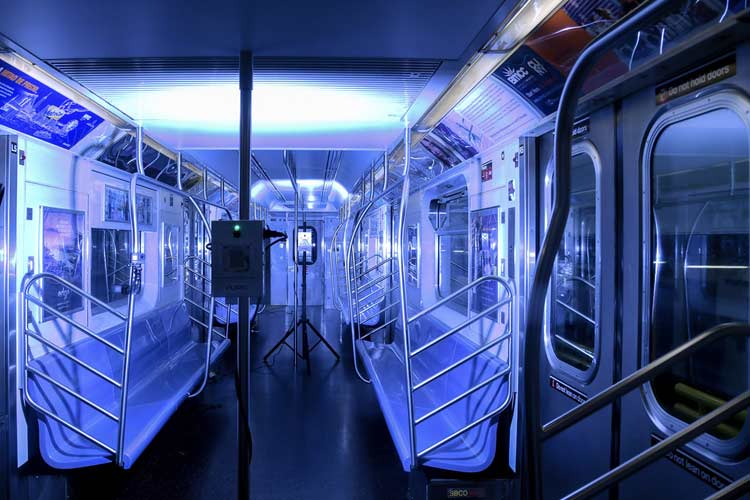
There have been ongoing discussions on whether UV light technology will prove successful in killing germs or not. One thing is for sure that with the COVID-19 pandemic, the use of UV lights has seen a surge and we can easily predict the future scenario. As the COVID-19 crisis will gradually ease off, fingers crossed; there will be many situations when people will move closer together in indoor places like hospitals, doctor’s clinics, educational institutes, public transport, restaurants, offices, gyms, etc. In such situations, overhead UVC lights will definitely prove beneficial in continuously killing microbes including the coronavirus, thereby curbing the spread of the virus.
Having said that, UVC light has the potential to be a powerful tool to limit the spread of COVID-19 and other infectious diseases, but none of the strategies is completely effective on its own. Various existing techniques and new ones would have to be used together for better results.





